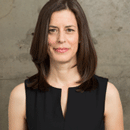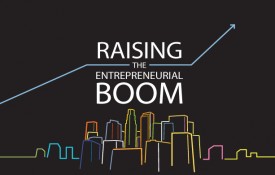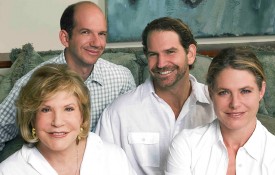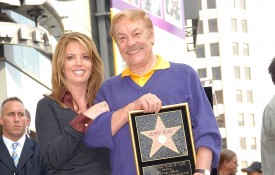There is a teaching that says a person should go through life carrying two notes: The first note should say, “For my sake the world was created” and the second, “I am but dust of the earth.” While this story was not meant to be a lesson in philanthropy, after spending two decades helping individuals and families make a significant impact through their giving, I can think of no better philanthropic guide.
I Am the World
The first note – For my sake the world was created – is a reminder that while it is easy to feel insignificant in the face of seemingly intractable social problems, funders have real power, and with that power comes the responsibility to take on big challenges.
Often, philanthropy has been seen as something “nice” – a way of giving back to the community, writing checks to important causes. But more and more it is clear that philanthropy at its core can and should be about social change. What does this look like? It looks like the Ford Foundation deciding to challenge inequality and Mayor Michael Bloomberg tackling gun violence. It is Tom Steyer wanting to take on climate change and Bill and Melinda Gates trying to revamp public education. Not all of these efforts have been or will be successful, but the first note reminds us that we have to set a high bar.
It also means that funders can not only deploy money if they want to affect change. They must also ask what else they can bring to the table – such as expertise and know-how, an ability to bring visibility to a cause, and the clout to bring people together from different sectors.
I Am Nothing
Understanding of one’s power and responsibility, though, is only one part of the equation and so there is the second note – I am but dust of the earth. At the very same time funders remember their significance, they have to be conscious of their smallness. It is common when you have money (or access to it) to believe that you know what needs to happen – especially when those seeking funds are often not in a position to tell you otherwise. And so there is also a culture among many funders of thinking that they know best. What does this look like? It looks like funders insisting that business practices and measurable results need to be brought to bear on the nonprofit sector, with no adaptation or nuance required. It looks like funders not wanting to invest in overhead, even though for-profit businesses would not run without it.
Behind these assumptions is a lack of understanding that funders do not know how, nor can they do, everything. We are but dust of the earth reminds us that we are not that important. That social change is not about funding or funders alone. Luckily, there is movement afoot in philanthropy that recognizes this dictum as well. Foundations like the Weingart Foundation in Los Angeles have decided to make significant general support grants to high-performing nonprofits. They are doing so in the belief that those working on an issue day-to-day know where resources should best be deployed and that under-resourced nonprofits do not serve any cause well.
“At the very same time funders remember their significance, they have to be conscious of their smallness.”
All Are One
All this may sound obvious, but it is not easy. The challenge as a funder (and in life) is to know when to take out which note. And perhaps even more challenging, but more important, is to know how to hold both notes at once.
After 20 years of doing this work, I am still asking myself that question. But here is one attempt: After the syndication of his television show Everybody Loves Raymond, our clients Phil Rosenthal and his wife Monica set up a family foundation with the goal of ensuring that more kids get access to high-quality arts education more of the time. For them, this is a social justice issue. With research demonstrating the arts is a critical tool in building academic and personal achievement, they asked themselves, “How is it okay that young people living in low-income ZIP codes get it the least?”
“The challenge as a funder (and in life) is to know when to take out which note. And perhaps even more challenging, but more important, is to know how to hold both notes at once.”
Needless to say, this is not an easy issue to solve, but the Rosenthals understand the power of philanthropy. And so, they have made smart investments in arts education, such as convincing a local public radio station to hire the first full-time arts education reporter in the region as a way to bring attention to the issue. They have also realized that they alone cannot solve this problem. In fact, there is not enough private funding to solve the issue of education. So they worked to put a measure on the ballot this November to increase public funding of arts education in a low-income school district as a test case. If it passes, their investment will be leveraged 20:1 and thousands of students will be getting the education they deserve.
That is what philanthropy can do if funders are both wildly ambitious and conscious of their own limitations. Our world deserves no less.
Rachel Levin is president of Fundamental, a boutique philanthropy consulting firm that works with individuals, families, and foundations to increase their impact on the issues they care about most.














































